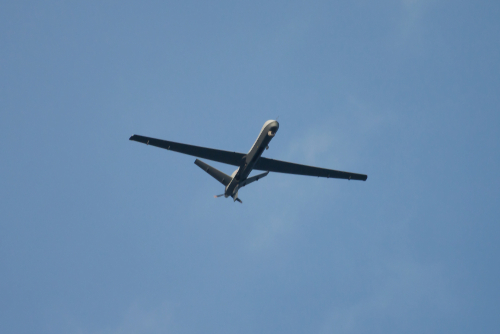
Despite major economic restrictions placed on Iran, U.S. intelligence has estimated that perhaps 75 percent of the components for Iranian drones recently used by Russia in suicidal bombing raids against Ukraine were U.S.-made, which caused a stir among House members this week.
A bipartisan collection of 60 lawmakers led by U.S. Reps. Henry Cuellar (D-TX), August Pfluger (R-TX), Brad Schneider (D-IL), and Don Bacon (R-NE) urged a coordinated, whole-of-government approach to interrupt Iran’s supply chains and eliminate U.S.-made parts from the equation. In a letter to the Biden administration, the lawmakers noted recent efforts taken by the federal government to address these issues but urged for more, citing the implications of inaction and the danger these drones pose.
“Iran’s fleet of drones have far-reaching implications beyond the war against Ukraine,” the representatives wrote. “These weapons provide Iran and its proxies with yet another tool to project power in the region, threatening our troops, key allies, and freedom of navigation. We appreciate your attention to this important issue. Immediate action is necessary not only to disrupt Iran’s burgeoning relationship with Russia but also to blunt Iran’s ability to undermine international law, project power across the Middle East, and threaten U.S. servicemembers.”
Since August 2022, as Russia’s invasion of Ukraine reached something of a stalemate, Russia bought hundreds of Shahed-136 and Shahed-131 drones from Iran. These drones are not as sophisticated as some – rather than advanced information gatherers or high-flying, precision strikers, they tend to be meant as one-way, unmanned aerial attack vehicles. They have been used for widespread attacks against civilian targets. Iran also supplied Russia with the more advanced Mohajer-6, a surveillance drone with precision air-to-ground striking capabilities.
During investigations of recovered drones in Kyiv, Ukraine, investigators determined – and U.S. Intelligence concurred – that explosive drones and other guided munitions were built mostly with parts from the United States, including Western semiconductors, despite sanctions. Many have been made since 2020. Other components were manufactured in Europe and Asia.
As a result, on Jan. 6, 2023, the Office of Foreign Assets Control levied new sanctions on any firms found to be involved in the production and delivery of Iranian drones to Russia.
“Iran should not have access to American-made technology to build weapons of war. Stopping the flow of U.S.-made parts will not only frustrate the regime’s efforts to arm Russia – it will also degrade Iran’s own precision-strike capabilities,” said Congressman Cuellar. “I urge President Biden and his Administration to investigate this concerning development and ensure that American technology does not end up in the hands of our adversaries.”




